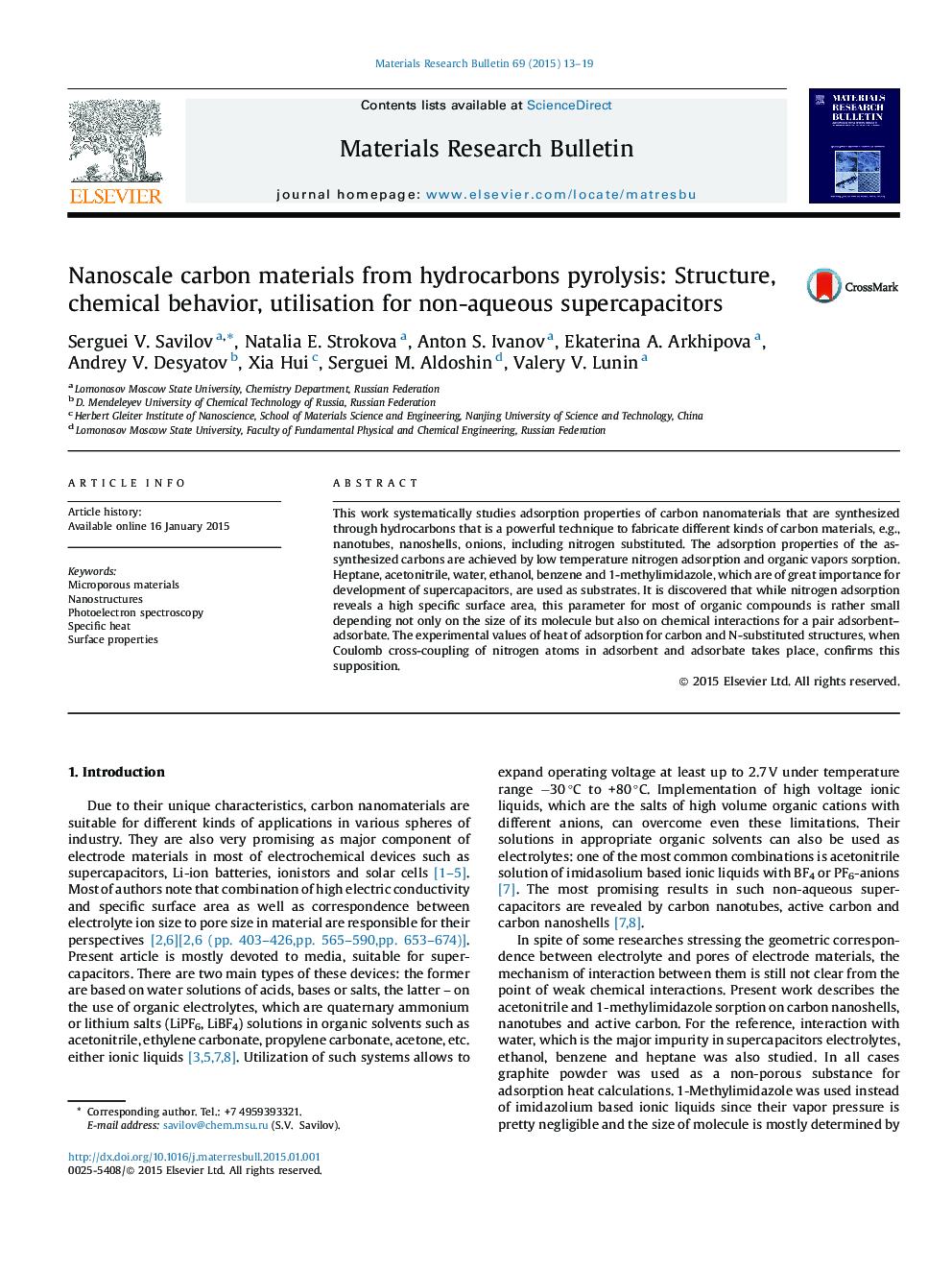| Article ID | Journal | Published Year | Pages | File Type |
|---|---|---|---|---|
| 1487776 | Materials Research Bulletin | 2015 | 7 Pages |
•N-doped and regular carbon nanomaterials were obtained by pyrolitic technique.•Dynamic vapor sorption of different solvents reveals smaller SBET values.•Steric hindrance and specific chemical interactions are the reasons for this.•Nitrogen doping leads to raise of capacitance and coulombic efficiency with non-aqueous N-containing electrolyte.
This work systematically studies adsorption properties of carbon nanomaterials that are synthesized through hydrocarbons that is a powerful technique to fabricate different kinds of carbon materials, e.g., nanotubes, nanoshells, onions, including nitrogen substituted. The adsorption properties of the as-synthesized carbons are achieved by low temperature nitrogen adsorption and organic vapors sorption. Heptane, acetonitrile, water, ethanol, benzene and 1-methylimidazole, which are of great importance for development of supercapacitors, are used as substrates. It is discovered that while nitrogen adsorption reveals a high specific surface area, this parameter for most of organic compounds is rather small depending not only on the size of its molecule but also on chemical interactions for a pair adsorbent–adsorbate. The experimental values of heat of adsorption for carbon and N-substituted structures, when Coulomb cross-coupling of nitrogen atoms in adsorbent and adsorbate takes place, confirms this supposition.
Graphical abstractFigure optionsDownload full-size imageDownload as PowerPoint slide
